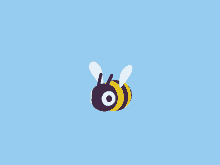Emergent Literacy:
Go to the Zoo with Z
Lesson by Claire Smith

Rationale:
This lesson will help children identify /z/, the phoneme represented by Z. Students will learn to recognize /z/ in spoken words by learning a sound analogy (buzzing bees) and the letter symbol Z, practice finding /z/ in words, and apply phoneme awareness with /z/ in phonetic cue reading.
Materials:
Primary paper and pencil, sheet with “Zoe zebra zipped to her zone.”, crayons, draw/writing paper, Julie Abery’s Little Zebra (Amicus Inc, 2021), assessment worksheet identifying pictures with /z/.
Procedures:
1. Introduce the phoneme /z/ by saying: Learning the alphabet is like learning a secret code! With each letter, we move our mouths to form the noise. To say /z/ you can start by making a sound with your voice, like /u/ or /i/, then place the tip of your tongue behind your teeth and very close to the roof of your mouth but not touching it. The sides of your tongue should rise to meet the roof on your mouth, leaving a passageway for air through the middle of your tongue. Keep your teeth closed, but part your lips slightly and pull back the corners, as though beginning to smile. It should almost feel like a buzzing in your mouth. With this noise, we represent it with the letter z.
2. How about we go on a trip! Where would you like to go? (Call on students to name where they want to go). How about the zoo? I love the zoo! There are so many animals that you can see there including the zebras! Can you tell me if the /z/ is in zebra? How about if I say it slowly? (zzzz-ee-bra, even slower, zzzz-eee-bb-rr-a) I felt the buzzing, so you were right, there is a /z/ is zebra.
3. Let’s try a tongue tickler! [on sheet] At the zoo, each animal has a certain feeding zone where they eat. Each day Zoe the zebra zips over to her feeding zone to greet her friend who feeds her. Here’s our tickler: Zoe zebra zipped to her zone. Everyone, say it together one time and then practice on your own for a few seconds. Okay let’s try dragging out the /z/ (zzzoe zzzebra zzzipped to her zzzone) okay now let’s break /z/ off (/z/-oe /z/-ebra /z/-ipped to her /z/-one).
4. (have students get primary paper and pencil); we use the letter z to spell /z/. To write the letter z, you start by drawing a short straight line along the top, then you draw a slanted line going slightly to the left, ending it at the bottom, and finishing by drawing another small line along the bottom. And this is how you write a lowercase z, except with the lowercase you start at the dotted middle line instead of the top. Once I see everyone’s z’s, I want you to write 5 more lowercase z’s.
5. (have students get out their draw/write activity paper); call on students and have them tell how they knew that /z/ is in: zoo or cage, bee or buzz, zip or button, wind or breeze [ask students to think of two things that start with the letter z and have them draw it in the box at the top of the paper and write what it is (using invented spelling).] I want you to draw what you think of starting with the letter z, and I want you to write what it is that you drew.
6. Lets get out or book, Little Zebra, and read about how the little zebra loves to jump and prance around until one day, she loses her mama! Let’s read to find out if she can find her!
7. For assessment, pass out the worksheet and have students color in what starts with a z and have them finish each spelling.
Reference:
Anne Lupo: https://anneclupo.wixsite.com/my-site-1/emergent-learning
Drawing activity:https://www.first-school.ws/images/writing-paper/story-paper.gif
Book: https://www.getepic.com/app/read/75796
Assessment Worksheet:https://www.kidzone.ws/images-changed/kindergarten/z-as-begins2.gif